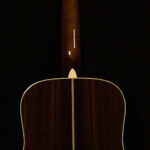The B7 guitar chord can feel intimidating at first, but it’s a crucial chord to learn for anyone venturing into blues, rock, and countless popular songs. Often heard in classics like “Johnny B. Goode” and “Twist and Shout”, the B7 adds a distinctive flavor to your playing. This guide will break down the easiest ways to play the B7 chord, making it accessible for guitarists of all levels.
What is the B7 Chord?
The B7 chord, technically a B dominant 7th chord, is built upon a B major chord with an added “dominant 7th” interval. This addition gives it a bluesy, slightly jazzy, and more complex sound compared to a simple B major. It’s this unique sound that makes the B7 so versatile and frequently used in various genres. Understanding the B7 chord opens up a world of musical possibilities on your guitar.
The Easiest Way to Play a B7 Guitar Chord
For beginners, the full barre chord version of B7 can be a stretch. Thankfully, there’s a simplified, easy B7 chord that sounds great and is much kinder to your fingers. This easy version is perfect for getting started and playing songs quickly.
Here’s how to play the easy B7 chord:
- Index Finger: Place your index finger on the 1st fret of the 4th string (D string).
- Middle Finger: Place your middle finger on the 2nd fret of the 3rd string (G string).
- Ring Finger: Place your ring finger on the 2nd fret of the 1st string (high E string).
Make sure your fingertips are just behind the fret, and press down firmly enough to get a clear sound from each string. Strum only the top three or four strings (D, G, B, and high E) for this easy B7 version.
This simplified B7 chord is a fantastic starting point. It captures the essence of the B7 sound and allows you to play along with songs without struggling with barre chords right away.
Moving on to the Standard B7 Chord
Once you’re comfortable with the easy B7, you can progress to the more common, standard version. This voicing is richer and fuller, utilizing more strings and offering a stronger B7 sound.
Here’s how to play the standard B7 chord:
- Index Finger: Barre your index finger across all six strings at the 7th fret. This means pressing down all strings with your index finger right behind the 7th fret.
- Ring Finger: Place your ring finger on the 9th fret of the 3rd string (G string).
- Pinky Finger: Place your pinky finger on the 9th fret of the 2nd string (B string).
Strum all six strings for the full B7 sound. Barre chords take practice to get clean and clear, so be patient and focus on pressing evenly across all strings with your index finger.
The B7 Barre Chord Variation
Another way to play the B7 chord as a barre chord is slightly different and can be useful when transitioning from other barre chords in different positions on the neck.
Here’s how to play this B7 barre chord variation:
- Index Finger: Barre your index finger across all six strings at the 7th fret.
- Middle Finger: Place your middle finger on the 8th fret of the 3rd string (G string).
- Ring Finger: Place your ring finger on the 9th fret of the 5th string (A string).
- Pinky Finger: Place your pinky finger on the 9th fret of the 4th string (D string).
For this barre chord variation, strum from the 5th string (A string) down to the 1st string (high E string). This version offers a slightly different tone and can be easier to transition to from other barre chords rooted on the 5th string.
B7 Chord Progressions and Songs
The B7 chord is a workhorse in many genres, particularly blues, rock and roll, and country music. Its dominant 7th quality makes it perfect for creating tension and leading to other chords. Here are some common chord progressions where you’ll frequently find the B7:
- Classic Blues Progression: I7-IV7-V7 (In the key of B, this is B7-E7-F#7). Think “Johnny B. Goode” by Chuck Berry, a quintessential rock and roll example using this progression.
- Variations: I7-IV7-I7-V7 (B7-E7-B7-F#7) and I7-IV7-I7-IV7-I7-V7-I7 (B7-E7-B7-E7-B7-F#7-B7) are also common in blues and early rock and roll, like in songs by Elvis Presley and Chuck Berry.
- Jazzier Progressions: I7-ii7-V7 (B7-C#m7-F#7) or I7-iii7-vi7-V7 (B7-D#m7-G#m7-F#7) introduce a more sophisticated harmonic movement, found in blues and jazzier styles.
Many famous songs feature the B7 chord. Here are a few to get you started playing and practicing your B7:
- “Let It Be” by The Beatles: While famous for other chords, “Let It Be” incorporates a B7, showing its versatility.
- “Rocket Man” by Elton John: This classic uses a B7 chord to add color and emotion.
- “Your Song” by Elton John: Another Elton John hit that utilizes the B7 chord in its rich harmonic landscape.
- “Isn’t She Lovely” by Stevie Wonder: Stevie Wonder’s songs are full of interesting chords, and “Isn’t She Lovely” is no exception, featuring the B7.
- “Harvest Moon” by Neil Young: Even in folk and acoustic styles, the B7 can find its place, as heard in this Neil Young favorite.
Drills to Help You Master the B7
Consistent practice is key to mastering any guitar chord. Here are some effective drills specifically for the B7 chord:
- Clean Note Practice: Play each note of the B7 chord individually, ensuring each string rings out clearly without buzzing. Focus on finger placement and pressure.
- Chord Transitions: Practice switching between the B7 and other common chords like E, E7, or A. Start slowly and gradually increase speed as your transitions become smoother.
- Rhythmic Strumming: Strum the B7 chord in various rhythms – downstrokes, upstrokes, and combinations. Experiment with different strumming patterns to develop your rhythm and timing.
- Chord Progressions Practice: Play the B7 chord progressions mentioned earlier repeatedly. This will help you internalize the sound of the B7 in context and improve your chord changes within a musical phrase.
By incorporating these drills into your practice routine, you’ll find yourself playing the B7 chord more confidently and smoothly in no time.
Guitar Lessons Can Accelerate Your Learning
If you’re finding it challenging to master the B7 chord or want to take your guitar playing to the next level, consider seeking guidance from a qualified guitar teacher. A good teacher can provide personalized feedback, identify areas for improvement, and create a structured learning plan tailored to your goals.
Online guitar lessons offer a convenient and effective way to learn from experienced instructors. Platforms like guitarplayers.net connect you with expert guitar teachers who can help you overcome challenges, master new techniques, and achieve your musical aspirations faster. Whether you’re struggling with barre chords, chord transitions, or understanding music theory, a guitar teacher can provide invaluable support and accelerate your progress.


